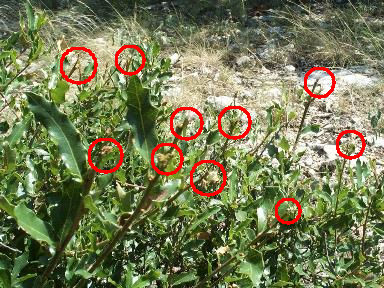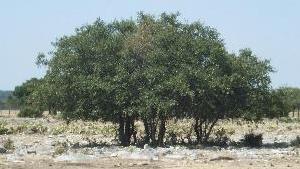- Trans Pecos
- High Plains/Panhandle
- Cross Timbers
- Hill Country
- Post Oak Savannah
- Pineywoods
- Oak Prairie
- South Texas Plains
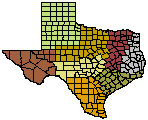
Wildlife Division District Map
Hill Country Wildlife Management
Vegetation
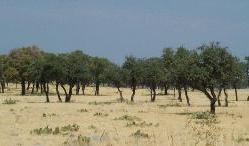
This photo illustrates the "browse line" that wildlife managers so frequently address. Notice there is no occurrence of root sprouting and there is only 1 browse species (live oak) found in the photo. Other than sparse shortgrass cover, the only other plant shown here is prickly-pear cactus, which is not a food item for Hill Country deer. Unlike south Texas deer, which readily eat prickly pear, Hill Country deer eat prickly pear only when they are near starvation.
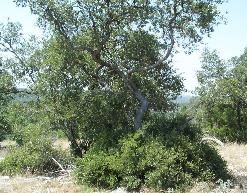
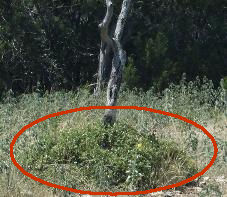 When deer and livestock numbers begin to surpass the carrying capacity of the rangeland, "hedging" is observed. Notice how the vegetation at the base of this tree looks as if someone pruned it with clippers, in contrast to the photo on the left, where the vegetation is more "bushy."
When deer and livestock numbers begin to surpass the carrying capacity of the rangeland, "hedging" is observed. Notice how the vegetation at the base of this tree looks as if someone pruned it with clippers, in contrast to the photo on the left, where the vegetation is more "bushy."
If animal numbers are not maintained at (or below) the level of which the rangeland can support, hedging becomes much more severe. Younger plants are stripped, and available forage becomes scarce. Eventually, this scene will look much like the scene in the photo at the top of this page. The photo below illustrates shin-oak tips browsed by white-tailed deer. 